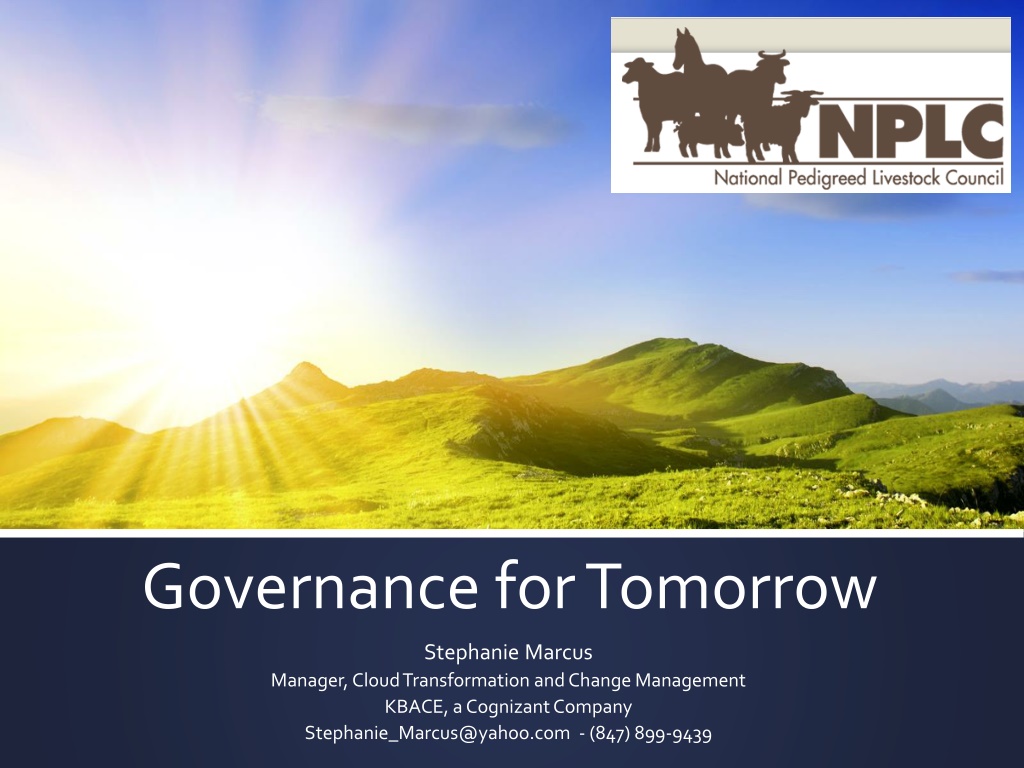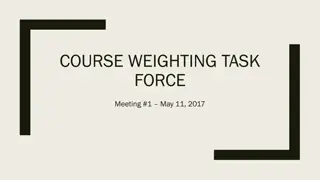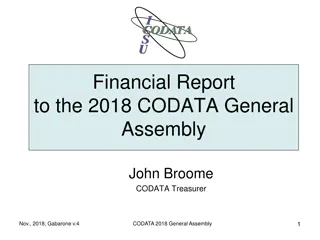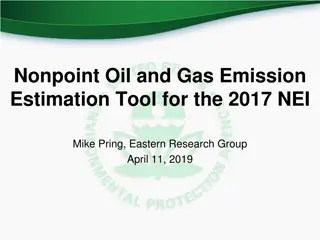
Understanding Governance Components and Models
Explore the concept of governance defined by shared decision-making and learn about common types of governance models including operational, collective, management, representational, and traditional. Discover the value of governance in achieving organizational goals and ensuring growth.
Download Presentation

Please find below an Image/Link to download the presentation.
The content on the website is provided AS IS for your information and personal use only. It may not be sold, licensed, or shared on other websites without obtaining consent from the author. If you encounter any issues during the download, it is possible that the publisher has removed the file from their server.
You are allowed to download the files provided on this website for personal or commercial use, subject to the condition that they are used lawfully. All files are the property of their respective owners.
The content on the website is provided AS IS for your information and personal use only. It may not be sold, licensed, or shared on other websites without obtaining consent from the author.
E N D
Presentation Transcript
Governance for Tomorrow Stephanie Marcus Manager, Cloud Transformation and Change Management KBACE, a Cognizant Company Stephanie_Marcus@yahoo.com -(847) 899-9439
Agenda Governance Stakeholders Directors Making a Change Communication and Engagement Additional Information PCI Web Conferencing Options Final Thoughts . . . .
Governance Defined Governance refers to All of the processes of governing and leadership The processes of interaction and decision-making among the people involved in a collective problem that lead to the creation, reinforcement, or reproduction of social norms and culture What is the value of governance for us? Enables us to achieve our organization's social mission, ensures our organization is both viable and consistently growing. Builds on our foundation (history) to achieve our future goals.
Common Types of Governance Operational Model: The board manages, governs and performs the work of the organization Collective Model: The board and staff operate as a single team when making decisions about governance and the work of the organization - Board members work with services and operations teams to manage functions Management Model: The board manages operations through functional committees that may or may not have a staff coordinator Representational Model: An approach used by elected officials who have the primary responsibility of balancing the interests of their constituents with the best interests of the organization Traditional Model: The board governs and oversees operations through committees established along functional lines (finance, human resources, programs) but delegates the management functions to the CEO
In its simplest form, GOVERNANCE is shared decision-making based on the principles of partnership, equity, accountability, ownership and leadership at the point of service for all stakeholders
Governance Components EQUITY SHARED PARTNERSHIP Fair, impartial, unbiased, objective and even-handed actions and responses to all customers, potential customers and the organization s teams More than one person, team, role or location is involved in decision making and delivering services Open and collaborative interactions to identify, resolve and confirm resolution of an issue, question or problem LEADERSHIP OWNERSHIP ACCOUNTABILITY Management of assigned duties and staff; guidance of the desired culture and behaviors; responsibility for making and upholding decisions; and ultimate answerability to customers The services, processes, deliverables and activities you are tasked with supervising, or those for which you have custody or guardianship Being fully responsible for those obligations, actions and tasks which you (in your formal role) have agreed to perform
What does MY organization look like? President Board Office Management/ ERP Operations Service and Operations Teams Shows and Events Awards Leadership Member Facing (Salaried, Volunteer) (Office, Events, Shows, Awards) Marketing/ Potential New Members/ Organization Growth Operations ( Running the Business ) Publicizing the Organization Cross-Over Special Events Expanded Registrations ERP/Back Office IT Processes Infrastructure
Governance . . .Keys to Success Understanding and validation of the owner, and type of ownership of solutions Leveraging the Vision Focus on Stakeholders Building Strategies Collaboration Sharing Success Communication!
Another key to successful governance is Stakeholder Management A Stakeholder is any person or organization with an interest in, or who is impacted by, the operations of your organization
What do we need to know about our Stakeholders? Level of impact: What they are impacted by: Directly Impacted The organization s future business goals Changes and business operations significantly affect this group/individual Current situations and challenges Indirectly Impacted Upcoming changes Changes and business operations affect this group in an ancillary manner Existing processes, rules, activities, communications and Informational This group needs to be kept informed but is not affected
Understanding the Stakeholder Experience An exercise to visualize stakeholder interactions How many teams/individuals are involved in a typical Stakeholder Interaction? Example Scenario: Member calls in with a question about their membership Member Calls Call Answering System Routing to team Additional Information Needed New Team Involved Solution Needs Further Investigation Member Call Back Needed New Individuals/Teams Involved Resolution Requires Validation Notification to all Impacted Teams/Individuals Documentation Updated Call Back to Member
Board of Directors Roles, Responsibilities, Elections, Task Force and Committees
Director Role Generally defined in the by-laws, and includes: Nomination criteria Responsibilities to members and involvement in the organization Requirements for representation of members Clear understanding of actions required to retain the role Guidelines for working on committees and task forces Term limits Campaigning rules and framework Touch-points across the organization Internal operations Members Other Groups (e.g. Sponsors, Other Organizations, etc.)
Director Responsibilities Commitment to the organization s Mission and Vision Support the work of the organization Act as an advocate for members Be a collaborative partner with the CEO and organization leaders Qualifications Extensive experience/membership in the organization Business acumen and understanding of the rules and goals of the organization Diplomatic skills and the ability for cultivating relationships and building consensus among diverse individuals Personal qualities of integrity, credibility, and a passion for improving the lives of all of the organizations members Term Limits Generally two to three years
Internal and External Facing Directors INTERNAL: Interface primarily within the organization s leadership and operations teams By-laws and Rules Organizational and Business Goal input/planning EXTERNAL: Interface primarily with external sources as an advocate Regional Clubs Champion for the clubs (support their ideas/needs not just your own) Formal engagement (club representatives, attendance at club events, etc.) Committees (e.g. increasing membership and animal registrations, awards) Task Forces (e.g. negotiations with show facilities, local sponsors, etc.) Information sharing Conference calls, WebEx type meetings, Director s newsletter
Leveraging Director Experience and Expertise On-boarding for new Directors Role and Responsibilities Rule book/By-Law review Understanding of previous pitfalls/lessons learned Clear connection to member representation Director Mentoring programs Pairing experienced/lifetime Directors with new Directors Multi-organization Director s Working Sessions Common challenges and solutions
Electing your Board of Directors Members determine Directors through a voting process Provides non-political , democratic control and representation of all member groups Since voting members have legal rights, it is essential to clarify membership criteria, privileges, and obligations, including those related to voting eligibility Bylaws of the organization provide The roles and responsibilities of the Directors Methods for which candidates cans share his/her beliefs and platforms The foundation for the voting process Voting can either be Push or Pull Paper Ballots sent to members On-line websites for voting Electronic (email) surveys
Managing Votes for an Impartial Result With the wide range of ages and cultures of your membership, it is critical that all members are engaged in the election process Know your members Query them about their preferred method of communication Mail, email, on-line web sites/surveys Provide a confidential method for voting Example: Send a letter/mail notification to members and ask them if they would prefer to receive information about the organization in the mail, by email, or go to the organization s web site. Ask them to respond using a post-card, email address or go to the organization s web site to respond. Send ballots based on the member s response.
Electronic Voting Feature Survey Monkey Survey Expression eSurveysPro Survey Gizmo QuestionPro Free/trial account Number of surveys Number of questions per survey Number of responses Number of question types Skip logic Piping Multiple languages supported Brand survey with your own logo Online survey reports Download/export responses Unlimited 10 100/survey 13 No No No No Yes No Unlimited Unlimited 200/survey 18 Yes No No Yes Yes Yes Unlimited Unlimited Unlimited 14 Yes No No Yes Yes No Unlimited Unlimited Unlimited 20 No No No No Yes Yes 1 10 Survey Tools 100/account 15 No No No No Yes No Voting Software: myDirectVote: Survey & Ballot Systems (SBS) online voting tool for elections of 5,000 voters or more Polyas: Make ballots online, upload the electoral roll, distribute voting credentials and receive election results - all at the push of a button Ballotbin: secure votes, vote from anywhere, results available during and/or after elections, abilitity to vote for more than one candidate Multiple other tools available based on the organization s individual needs
Task Forces and Committees
Task Forces and Committees Task forces are generally organized to deal with a specialized task such as by-law changes, organizational changes (e.g. number of regions/territories, etc.) and are disbanded when the task has been completed Committees are usually appointed for a specific function, and would include only some of the Directors with expertise in that area For example, a Board of Directors would appoint some of the members to a Judges Committee whose special function would be to interface with the Show Office Team, Judge s Organizations and Regional Clubs to gather questions/issues, advise on rules, make recommendations, and review changes impacting the judging faction for the organization Committees are standing organizations and Task Forces are temporary with a focus on a specific deliverable or issue Task Forces are sometimes referred to as Ad hoc Committees
Task Force Structure and Tenure Defined task that needs to be addressed quickly Short term > 30 days Mid-term = 30 to 60 days Long-term = 60 to 90 days Criteria for completing the task have been defined, and it is clear/easy to understand when the task has been completed Driven by an agreed upon leader Additional non-Director subject experts may be included All task force members are equal and must agree to meet the requirements for resolution Minutes are recorded for all Task Force meetings and shared as applicable
Committee Structure and Tenure Establish committees when it's apparent that issues are too complex and/or numerous to be handled by the entire board Standing committees should be included in the by-laws of the organization Committees recommend policy for approval by the entire board Committees make full use of board members' expertise, commitment, and ensure diversity of opinions on the board Additional non-Director subject experts may be included All Committee agree to meet the requirements for being a member of the committee Minutes are recorded for all Committee meetings and shared as applicable
Are Changes Needed? How Much Change? How Quickly? ..in a period of upheaval, such as the one we are living in, change is the norm." For Whom? What is the Benefit? - Peter F. Drucker How do we make it happen?
Drivers for Identifying When to Change Changes in the economy Business goals are not on track or are not being achieved Feedback from membership and other stakeholders Financial drivers Changes in sponsorship Cultural changes Change IS Hard!
Ensuring Change is Effective Change Traits Ineffective Effective In conflict with goals Ad hoc Expensive Time consuming Not connected to market demands Unpleasant / Stressful Disruptive to business operations Interrupts business operations Change does not stick Aligned to goals Intentional and planned Cost effective Time appropriate Responsive to market & member demands Low stress levels Does not interrupt business operations Change sticks and becomes the new normal A decision to undertake change carries with it the responsibility to ensure that the change is effective and adds value to the organization and members
What changes could I focus on? Processes Currently In Place Potential Members Possibilities for Expansion Business Operations Possible Sponsors Employee Skills Other Special Groups Board of Directors Role Sponsors Membership Delight Increased Alliances Sponsorship Engagement Donations Regulatory Association Requirements By-Laws Updates
Diagnostic Questions to Manage Change Strategy Internalization Focus Sustainability Are we clear on how processes should work inside departments, between departments, with our Board and members? What is the vision? Is there the right sponsorship and buy- in for the objectives from membership? How will members be impacted? What s the roadmap? Is there a project plan? What s the message why, what, how, and ultimate goal? How will we know if we ve succeeded or failed? How are we using directors, members and other stakeholders feedback? Are changes being utilized? How and when are we communicating? Did we share the benefits of having this change in place? Do we know how to best customize our messages? What are leaders thinking, saying, asking, doing? Did all stakeholders receive all they needed to adopt the change and make it the new norm? How will we know the message has been heard and understood?
Planning for the Change Change Strategy Develop a tactical plan of action designed to achieve a particular goal Avoid strategies that are not specific (e.g. get people engaged , etc.) Use the strategy to make the problem or problems easier to solve Provide a common level of understanding Resistance Strategy Proactively seek out what types of resistance you might encounter Don t wait until after resistance is engaged Study and learn what types of resistance can be expected Work with those impacted to determine why they would resist Operational Change Tactics Define and execute specific actions with resources identified and approved Key messages drafted, reviewed and approved including delivery method and feedback process
Change Management Tools Assess your Stakeholders and the impact to them Assess the impact of the change Communications Plan and scheduled Communications look & feel Review and approval process Audience analysis Publication methods Support for the change and feedback loop Sustainability for the future
Next Steps Where to Focus? High High Value, Highly Achievable Goals Level of Importance Low High Level of Achievability
Communications and Engagement
Keys to Effective Communication Ensure that required actions have been taken and feedback collected Ensure the message was understood and can be acted upon Ensure the Communication was received and read Design and deliver the Communication
Information Sharing and Understanding Share information effectively and extensively Push to audience and allow audience to Pull from a central source 3x3 three times, three different ways is good 5x5 five times, five different ways is better Communication methods Email Hard copy/ snail mail Website Posters/Flyers at events Town Hall/Conference Calls From Directors to Regional Clubs to Members In-person events (e.g. Membership Meetings, etc.) Ensure a feedback loop is in place to measure for understanding and engagement
PCI Compliance PCI DSS stands for Payment Card Industry Data Security Standard, which sets the requirements for organizations and sellers to safely and securely accept, store, process, and transmit cardholder data during credit card transaction to prevent fraud and data breaches Who needs PCI DSS compliance certification? Although there is technically no such thing as PCI certification, sellers of all sizes, service providers, banks, and any other organizations that process credit card payments need to prove they are PCI compliant What are the PCI DSS compliance levels? There are four levels of PCI compliance; each level has unique requirements for a business to validate its compliance. The level under which your business falls is based on your total transaction volume, annually What does it cost to be PCI DSS compliant? The fees to become PCI compliant, and maintain that standing annually, can range from approximately $1,000 annually to over $50,000 annually, depending on the size of your business Who is responsible for a PCI DSS Compliance Self-Assessment Questionnaire (SAQ)? The PCI DSS Self-Assessment Questionnaire is a checklist ranging from 19 to 87 pages, created and distributed by the PCI Security Standards Council. It s used as a mechanism for sellers to self-validate their PCI DSS compliance. Square sellers are not responsible for this SAQ, or for self-validating, since Square s hardware and software complies with the Payment Card Industry Data Security Standard (PCI DSS) on your behalf Is there a PCI noncompliance fee? Yes, there are typically fees associated with PCI noncompliance If your business does not comply with PCI standards, you could be at risk for data breaches, fines, card replacement costs, costly forensic audits and investigations into your business, brand damage, and more
On-Line/Web Conferencing Software Free web-meeting software for small meetings Fuze Go To Meeting MeetingBurner WebEx Free up to three people Paid version supports extremely large groups Wikipedia Comparison of Web Conferencing Software (click here to go to web site) Capterra Comparison of Web Conferencing Software (click here to go to web site)
What are the five things everyone in your organization needs to know in order to ensure that they remain engaged? 1. What is an . . . . ? 2. Why is it of benefit for me to belong to this organization? 3. What does this organization do to make my livestock more valuable? 4. How can my organization help me to share what I love about this organization with others? 5. . . . . . .
Governance for Tomorrow Stephanie Marcus Manager, Cloud Transformation and Change Management, KBACE a Cognizant Company





